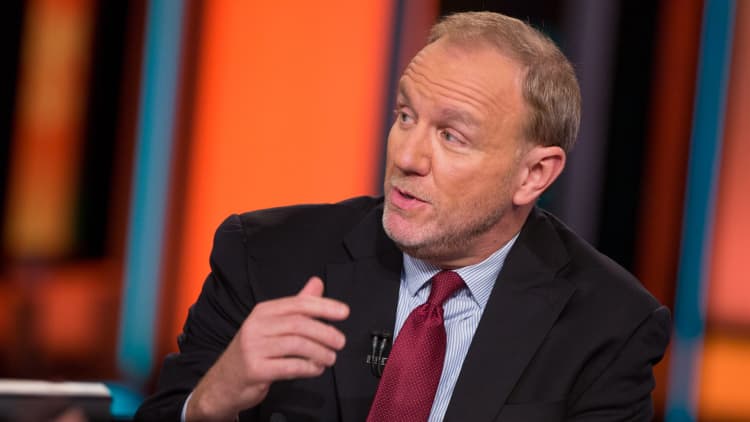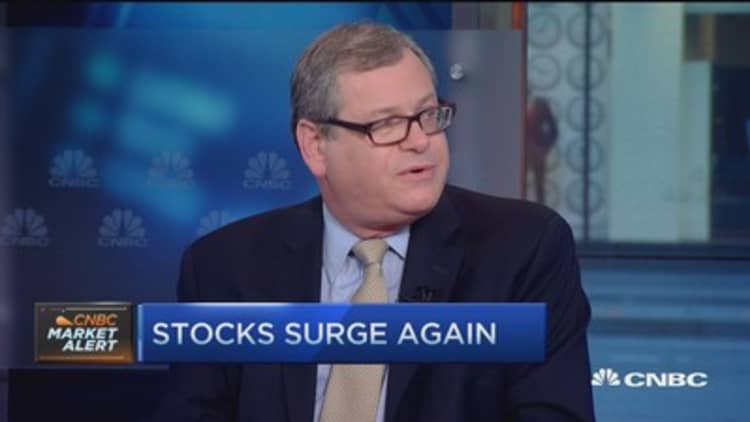


While many investors are pegging the global markets' recent plunge to wild swings in Chinese equities and the drop in oil prices, strategist Jim Paulsen said Thursday there's a more fundamental reason.
"I think the drop had more to do with the vulnerabilities of the market," Paulsen said in a CNBC "Squawk Box" interview. "We had market that was richly overpriced and investors getting too calm and complacent."
The chief investment strategist for Wells Capital Management said China was "the straw that broke the camel's back."
China's Shanghai composite closed more than 5 percent higher on Thursday, after sinking below its key 3,000 mark earlier this week. U.S. stock shot up in early trading Thursday, a day after the Dow Jones industrial average rallied more than 600 points for the first time since 2008, reversing multiple sessions of triple-digit losses.
Read MoreQ2 US GDP better than expected
The move has led many investors wondering whether or not the market has reached a bottom. Citi's chief U.S. strategist, Tobias Levkovich, said it has.
"When you look at what's going on in the market, it's suggesting we're finding this bottom," he told "Squawk Box."
"If you look at the 90-day implied volatility divided by the 30-day implied volatility, you are more than three standard deviations below average, going back to 2000.That has happened only 24 times in the last 15 years," he said. "This means that you have a contango in volatility, where people believe that the short-term volatility is too high, and what it really generates is a 96 percent probability of stocks rising in three months."
Barclays' strategist Hans Olsen said that while the market is forming a bottom, it will not be a smooth V-shaped bottom.
"Nothing's been truly resolved here," Olsen said on "Squawk Box." "It wouldn't surprise me to see a retest of the lows here."
"There's been a fair amount of damage being done here, and I'm not so sure that it would work out so neatly that the bottom would [form] a V-shape and we're off to the races again," said Olsen, global head of investment strategy at Barclays Wealth and Investment Management.
Olsen also said a Federal Reserve rate increase is coming "sooner rather than later" because recent economic data support it, making a choppier bottom likely.
"After almost a decade of zero interest rates, there's going to be some volatility," Olsen said.
Questions about whether or not the central bank will start normalizing monetary policy in September gained much more traction amid the recent volatility in global investment markets. Nevertheless, Kansas City Fed President Esther George said Thursday the central bank is still prepared for a rate hike in the near term.
Read MoreFed's George: Prepared for rate hike, despite selloff
"This week's events complicate the picture but I think it's too soon to say it fundamentally changes that picture, so in my own view, the normalization process needs to begin and the economy is performing in a way that I think it's prepared to take that," George said.


